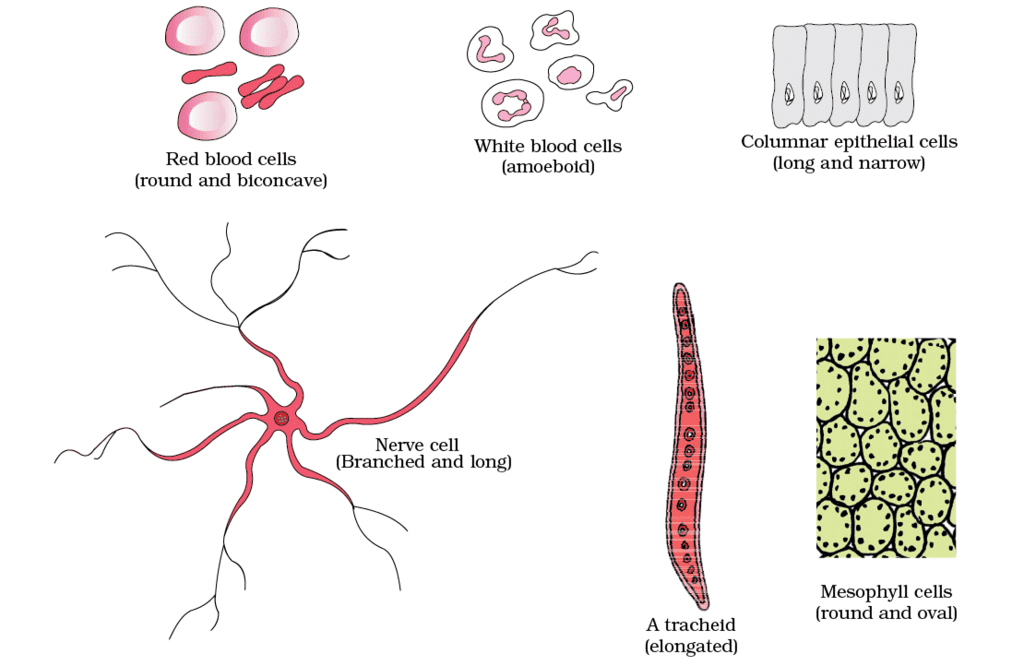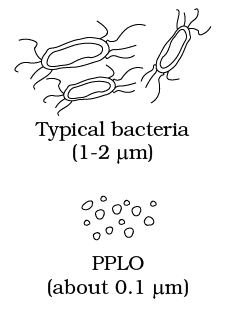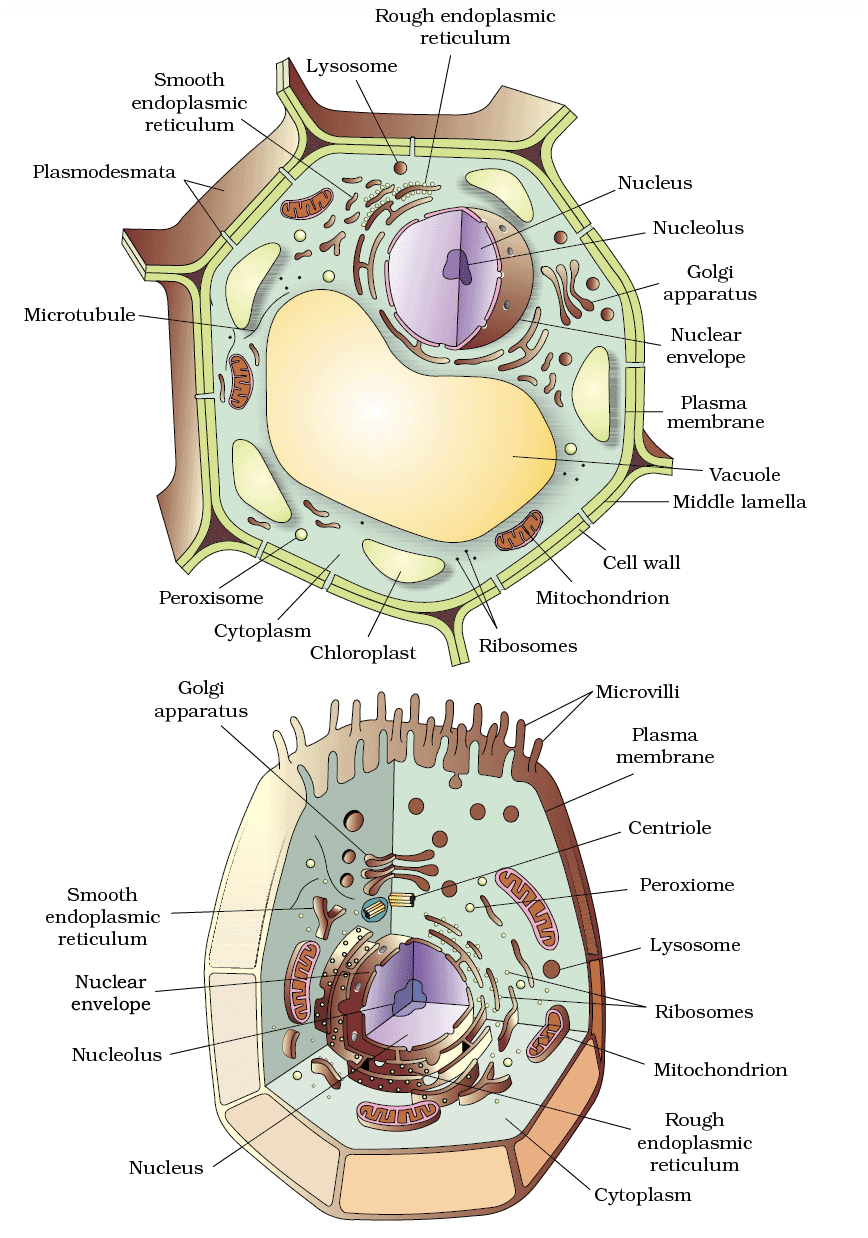Revision Notes: Cell - The Unit of Life | Biology Class 11 - NEET PDF Download
| Table of contents |

|
| Introduction to Cells |

|
| An Overview of Cell |

|
| Prokaryotic Cells |

|
| Eukaryotic Cells |

|
| Summary |

|
Introduction to Cells
Cells are the fundamental structural and functional units of life, distinguishing living organisms from non-living things. Unicellular organisms (e.g., Amoeba) perform all life functions within a single cell, while multicellular organisms (e.g., humans) consist of many cells. Anton Von Leeuwenhoek first described a live cell, Robert Brown discovered the nucleus, and microscope advancements revealed cell details.
Cell Theory
Developed by Matthias Schleiden (1838) and Theodore Schwann (1839), with Rudolf Virchow’s addition (1855), the cell theory states:
- All living organisms are composed of cells and their products.
- All cells arise from pre-existing cells (Omnis cellula-e cellula).
Schleiden noted plants are made of cells, Schwann identified the plasma membrane and cell wall uniqueness in plants, and Virchow explained cell division.
An Overview of Cell
Cells vary in size (e.g., Mycoplasma: 0.3 μm; ostrich egg: largest single cell), shape (e.g., round RBCs, thread-like nerve cells), and function. Key features include:
- Plant cells (e.g., onion peel): Cell wall, cell membrane, nucleus with DNA, cytoplasm.
- Animal cells (e.g., cheek cells): Cell membrane, nucleus, cytoplasm.
- Types: Prokaryotic (no membrane-bound nucleus/organelles) and eukaryotic (membrane-bound nucleus/organelles).
- Organelles: Eukaryotes have ER, Golgi, lysosomes, mitochondria, etc.; ribosomes (non-membrane-bound) are in both; animal cells have centrosomes.
 Different Shapes of Cells
Different Shapes of Cells
Prokaryotic Cells
Prokaryotes (e.g., bacteria, mycoplasma, PPLO) are smaller, multiply faster, and lack a nuclear membrane. Shapes include bacillus, coccus, vibrio, and spirillum. Prokaryotic Cells
Prokaryotic Cells
- Structure: Cell envelope (glycocalyx, cell wall, plasma membrane except in mycoplasma), cytoplasm, naked DNA (single chromosome + plasmids), ribosomes (70S), mesosomes, inclusions.
- Cell Envelope: Glycocalyx (slime layer or capsule), cell wall (shape/support), plasma membrane (selectively permeable); Gram-positive/negative based on staining.
- Mesosomes: Membrane infoldings aiding wall formation, DNA replication, respiration, secretion.
- Motility: Flagella (filament, hook, basal body); pili (attachment, tubular); fimbriae (bristle-like, attachment).
- Ribosomes: 70S, protein synthesis site, form polysomes on mRNA.
- Inclusions: Non-membrane-bound reserves (e.g., phosphate, glycogen granules, gas vacuoles in cyanobacteria).
Eukaryotic Cells
Eukaryotes (protists, plants, animals, fungi) have a nucleus with nuclear envelope, membrane-bound organelles, and cytoskeletal structures. Plant cells have cell walls, plastids, large vacuoles; animal cells have centrioles. Plant Cell and Animal Cell
Plant Cell and Animal Cell
1. Cell Membrane
Composed of a phospholipid bilayer (polar heads outward, hydrophobic tails inward), cholesterol, proteins (52% in RBCs), and carbohydrates. Singer and Nicolson’s fluid mosaic model (1972) highlights fluidity for cell growth, secretion, etc.
- Transport: Passive (diffusion, osmosis—no energy); active (against gradient, ATP-driven, e.g., Na+/K+ pump).
2. Cell Wall
- Structure: Non-living, rigid; algae (cellulose, minerals); plants (cellulose, hemicellulose, pectins); primary wall grows, secondary wall forms later; middle lamella (calcium pectate) glues cells; plasmodesmata connect cytoplasm.
- Functions: Shape, protection, cell interaction.
3. Endomembrane System
Coordinated organelles: ER, Golgi, lysosomes, vacuoles.
a) Endoplasmic Reticulum (ER)
- Types: Rough ER (RER, with ribosomes, protein synthesis/secretion); Smooth ER (SER, lipid/steroid synthesis).
b) Golgi Apparatus
- Structure: Flat cisternae (cis-forming, trans-maturing faces).
- Function: Packages materials from ER, forms glycoproteins/glycolipids.
c) Lysosomes
- Membrane-bound vesicles with hydrolytic enzymes (acidic pH) for digesting macromolecules.
d) Vacuoles
- Bound by tonoplast; store water, sap, waste; large in plants (up to 90% volume); contractile (Amoeba, osmoregulation); food vacuoles in protists.
4. Mitochondria
- Structure: Double membrane (outer smooth, inner cristae), matrix with circular DNA, 70S ribosomes.
- Function: Aerobic respiration, ATP production (“powerhouse”).
5. Plastids
- Types: Chloroplasts (chlorophyll, photosynthesis), chromoplasts (carotenoids, color), leucoplasts (storage—amyloplasts, elaioplasts, aleuroplasts).
- Chloroplast: Double membrane, stroma (enzymes, DNA, 70S ribosomes), thylakoids (grana, light reactions).
6. Ribosomes
- 80S (eukaryotes, 60S+40S), 70S (prokaryotes, chloroplasts, mitochondria, 50S+30S); protein synthesis sites, free or on RER.
7. Cytoskeleton
- Microtubules, microfilaments, intermediate filaments; support, motility, shape maintenance.
8. Cilia and Flagella
- Hair-like, with 9+2 microtubule axoneme, basal bodies; cilia (short, oar-like), flagella (long, movement).
9. Centrosome and Centrioles
- Two perpendicular centrioles (9 triplet fibrils, hub, spokes); form cilia/flagella basal bodies, spindle in animal cell division.
10. Nucleus
- Structure: Nuclear envelope (double membrane, pores), nucleoplasm, chromatin (DNA, histones), nucleoli (rRNA synthesis).
- Chromosomes: Centromere types—metacentric (equal arms), sub-metacentric (unequal), acrocentric (short+long), telocentric (terminal); kinetochores; satellites in some.
- Function: Controls organelles, heredity.
11. Microbodies
- Enzyme-containing vesicles in plant/animal cells.
Summary
Cells, the basic units of life, vary in size/shape/function and are prokaryotic (no nucleus/organelles) or eukaryotic (nucleus/organelles). The cell theory states all organisms are cellular, arising from pre-existing cells. Eukaryotic cells feature a fluid mosaic membrane, endomembrane system (ER, Golgi, lysosomes, vacuoles), mitochondria, plastids (plants), ribosomes, cytoskeleton, cilia/flagella, centrosomes (animals), and nucleus, each with specific roles in cellular function and heredity.
|
150 videos|401 docs|136 tests
|
FAQs on Revision Notes: Cell - The Unit of Life - Biology Class 11 - NEET
| 1. What is the basic structure of a cell? |  |
| 2. What are the differences between prokaryotic and eukaryotic cells? |  |
| 3. How do plant cells differ from animal cells? |  |
| 4. What is the function of the mitochondria in a cell? |  |
| 5. What role do ribosomes play in the cell? |  |
















